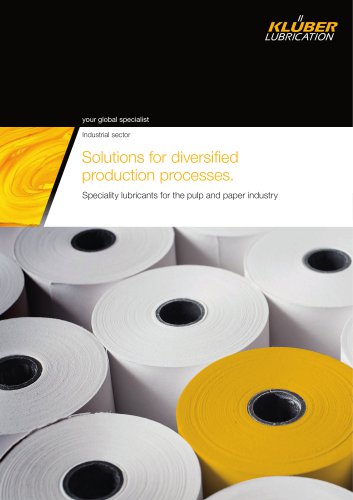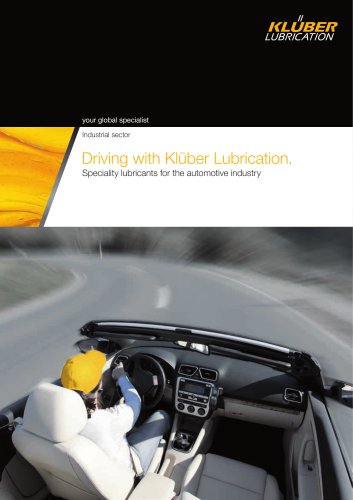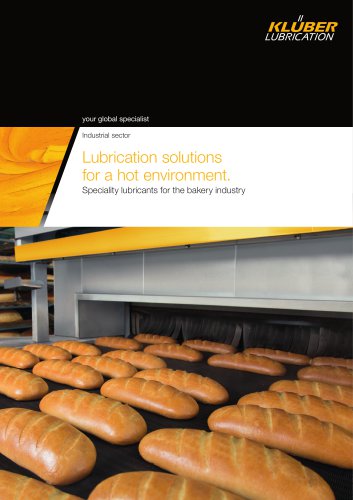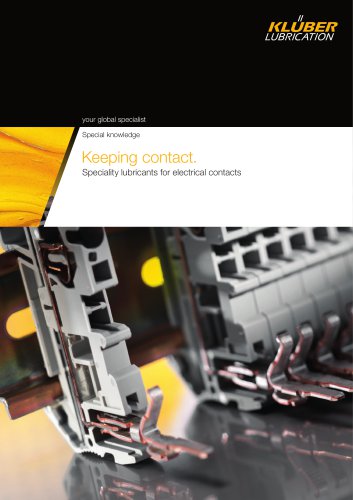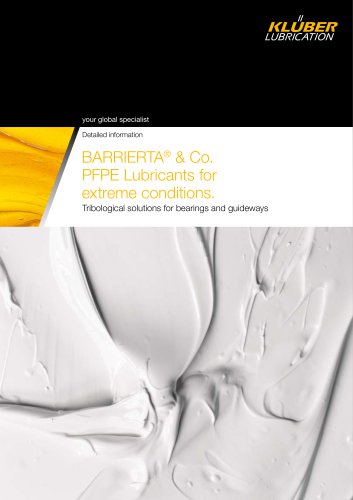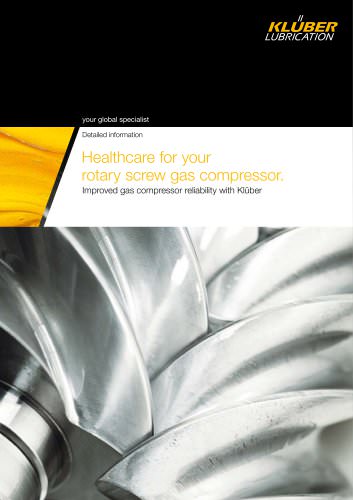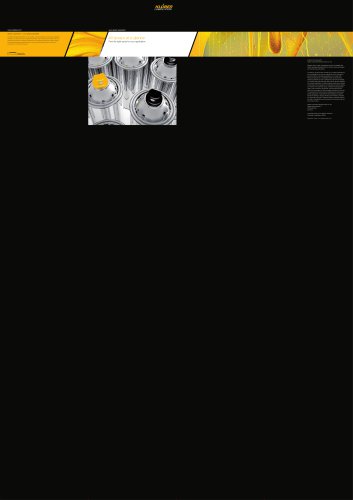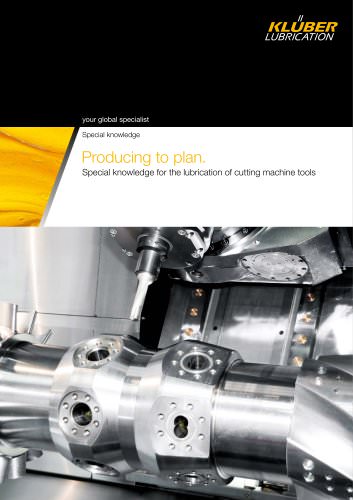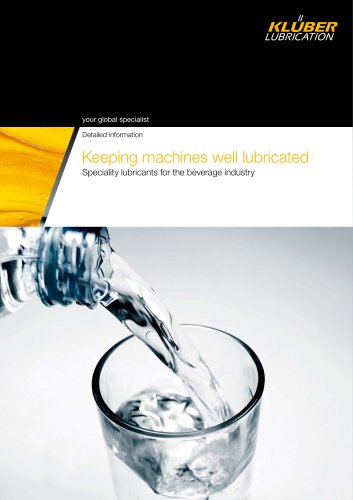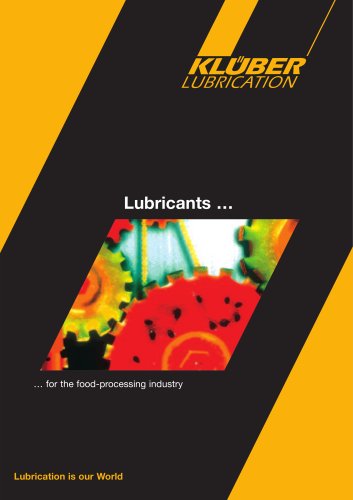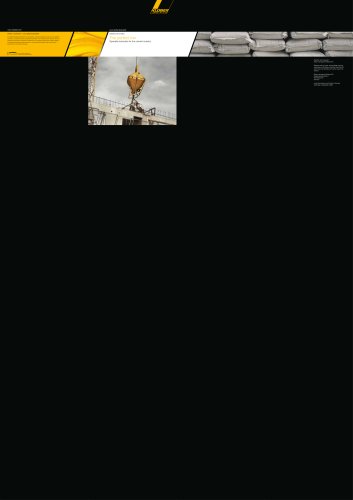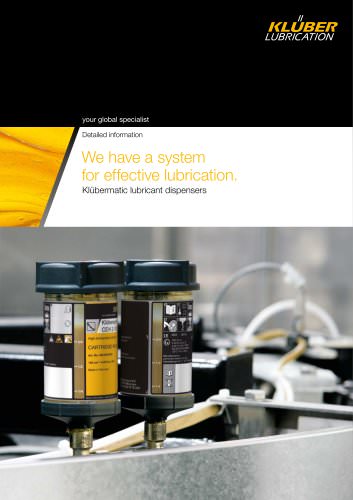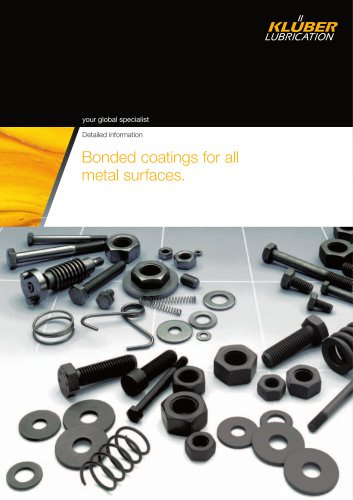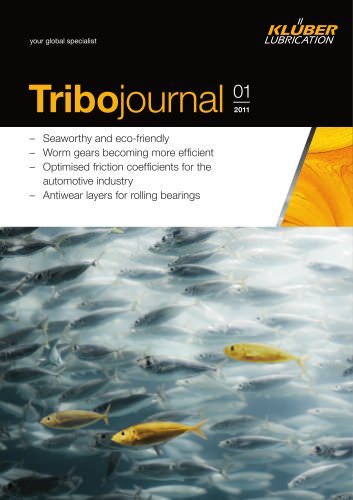 Website:
Klüber Lubrication
Website:
Klüber Lubrication
Group: Freudenberg
Catalog excerpts

Pneumatics Seals and lubricants: an ideal combination Lubrication is our World
Open the catalog to page 1
Contents Page Pneumatic drives 3 Sealing system 4 Tribological aspects of the sealing system 5 Friction conditions 7 Surface finish 9 Seals and lubricants for ISO cylinders 10 Seals and lubricants for short-stroke and compact cylinders 14 Seals and lubricants for valves 18 Product data 20 2
Open the catalog to page 2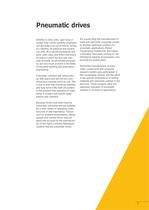
3 Pneumatic drives Whether in drive units, open-loop or closed-loop control systems: engineers can get quite a lot out of thin air. Acting on cylinders, air pressure and suction can shift, lift or reshift workpieces and tools, start, stop, and direct machinery as well as control the flow and pressure of media. Small wonder pneumatics are very much at home in the fields of industrial handling and automation engineering. Pneumatic cylinders and valves take up little space and are not only very robust but overload-proof as well. This is due to their high functional reliability and long service...
Open the catalog to page 3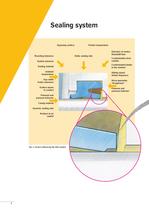
4 Sealing system Fig. 1: Factors influencing the tribo-system Opposing surface Static sealing side Friction temperature Mounting tolerance System pressure Sealing material Ambient temperature Gap width Guide clearance Surface layers in contact Pressure and pressure behavior Casing material Dynamic sealing side Medium to be sealed Direction of motion Standstill time Contamination from outside Contamination/water in the medium Sliding speed Stroke frequency Micro-geometry “Roughness” Pressure and pressure behavior
Open the catalog to page 4
5 In an operating sealing system, friction and service life are interrelated. The nature of this specific relation depends on a number of operating parameters (temperature, pressure and speed), the mounting position, the geometry and material of the seal, its surface finish and the lubricant used (Fig. 1). Friction describes the energy lost as a consequence of physical energy transport. In linear motion, friction is constituted by the forces resisting this motion, i.e. a friction force. This friction force is the result of the interaction between the opposing bodies and the materials’...
Open the catalog to page 5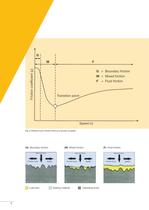
6 Fig. 2: Stribeck curve: friction force as a function of speed Normal force Friction force Speed Friction force Speed Friction force Speed Normal force Normal force (G) Boundary friction (M) Mixed friction (F) Fluid friction Lubricant Sealing material Opposing body G M F G = Boundary friction M = Mixed friction F = Fluid friction Transition point Friction coefficient (ì) Speed (v)
Open the catalog to page 6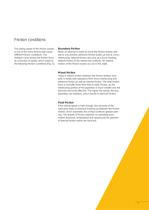
7 Friction conditions The sliding speed of the friction bodies is one of the many factors that cause different friction conditions. The Stribeck curve shows the friction force as a function of speed, which leads to the following friction conditions (Fig. 2): Boundary friction When an attempt is made to move the friction bodies relative to one another, adhesive friction builds up due to microinterlocking. Internal friction also acts as a force resisting relative motion of the interlocked surfaces. No relative motion of the friction bodies occurs in this state. Mixed friction There is...
Open the catalog to page 7
8 Fig. 4: “too smooth” Fig. 5: “too rough” Fig. 3: “ideal”
Open the catalog to page 8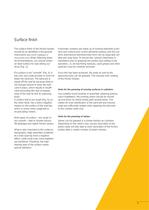
9 Surface finish The surface finish of the friction bodies should be as identified in the general instructions (see Simrit Catalogue or www.simrit.com). When following these recommendations, you should obtain an ideal surface for seal sliding surfaces (Fig. 3). If a surface is too “smooth” (Fig. 4), it has only very small pockets in which to retain the lubricant. The lubricant is wiped off the seal lip because there is not enough texture to keep the lubricant in place, which results in insufficient lubricating film and increased wear of the seal lip and its opposing body. A surface that is...
Open the catalog to page 9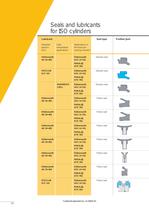
Seals and lubricants for ISO cylinders Klübersynth Klübersynth Damper seal AR 34-402 UH1 14-151 PARALIQ GTE 703 POLYLUB Klübersynth Damper seal GLY 151 UH1 14-151 PARALIQ GTE 703 BARRIERTA Klübersynth Damper seal L55/1 UH1 14-151 PARALIQ GTE 703 Klübersynth Klübersynth Piston seal AR 34-402 UH1 14-151 PARALIQ GTE 703 Klübersynth Klübersynth Piston seal AR 34-402 UH1 14-151 PARALIQ GTE 703 Klübersynth Klübersynth Piston seal AR 34-402 UH1 14-151 PARALIQ GTE 703 Klübersynth Klübersynth Piston seal AR 34-402 UH1 14-151 PARALIQ GTE 703 Klübersynth Klübersynth Piston seal AR 34-402 UH1 14-151...
Open the catalog to page 10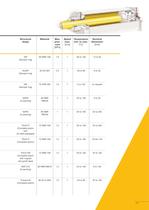
Structural Material Max. Speed Temperature Nominal shape pres- max. min. to max. dimension sure [m/s] [°C] [mm] [MPa] DIP 90 NBR 108 1.6 1 -30 to 100 14 to 50 (Damper ring) AUDIP 94 AU 925 2.5 1 -30 to 90 8 to 50 (Damper ring) DIP 75 FPM 595 1.6 1 -5 to 150 on request (Damper ring) NAPN 80 NBR 1 1 -20 to 100 6 to 25 (U-packing) 186349 NAPN 80 NBR 1 1 -20 to 100 32 to 320 (U-packing) 186349 TDUO P 72 NBR 708 1.2 1 -20 to 100 25 to 200 (Complete piston with air relief passages) TDUO P 72 NBR 708 1.2 1 -20 to 100 25 bis 140 (Complete piston) TDUO PM 72 NBR 708 1.2 1 -20 to 100 32 to 100...
Open the catalog to page 11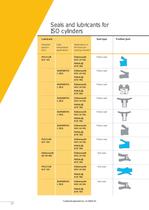
12 Seals and lubricants for ISO cylinders POLYLUB Klübersynth Piston seal GLY 151 UH1 14-151 PARALIQ GTE 703 BARRIERTA Klübersynth Piston seal L 55/1 UH1 14-151 PARALIQ GTE 703 BARRIERTA Klübersynth Piston seal L 55/1 UH1 14-151 PARALIQ GTE 703 BARRIERTA Klübersynth Piston seal L 55/1 UH1 14-151 PARALIQ GTE 703 BARRIERTA Klübersynth Piston seal L 55/1 UH1 14-151 PARALIQ GTE 703 BARRIERTA Klübersynth Piston seal L 55/1 UH1 14-151 PARALIQ GTE 703 POLYLUB Klübersynth Piston seal GLY 151 UH1 14-151 PARALIQ GTE 703 Klübersynth Klübersynth Rod seal AR 34-402 UH1 14-151 PARALIQ GTE 703 POLYLUB...
Open the catalog to page 12
13 Structural Material Max. Speed Temperature Nominal shape pres- max. min. to max. dimension sure [m/s] [°C] [mm] [MPa] NAP 310 80 AU 20994 1.2 1 -35 to 80 8 to 200 (U-packing) NAPN 75 FPM 595 1 1 -5 to 150 on request (U-packing) Pneuko M 75 FPM 1.2 1 -5 to 150 32 to 100 (Complete piston) 181327 TDUO P 75 FPM 595 1.2 1 -5 to 150 on request (Complete piston with air relief passages) TDUO P 75 FPM 595 1.2 1 -5 to 150 on request (Complete piston) NAP 210 75 FPM 1.2 1 -5 to 200 8 to 100 (U-packing) 99104 NAP 300 80 AU 941 1.2 1 -35 to 80 25 to 125 (U-packing) NIPSL 72 NBR 708 1.2 1 -20 to 100...
Open the catalog to page 13All Klüber Lubrication catalogs and technical brochures
-
KlueberEfficiencySupport
7 Pages
-
Klübermatic lubricant dispensers
13 Pages
-
Driving with Klüber Lubrication.
15 Pages
-
Geared up for success.
32 Pages
-
All sprays at a glance
2 Pages
-
Bonded coatings
16 Pages
-
Automotive industry
16 Pages
-
Cement industry
2 Pages
-
Tribojournal edition 1 - 2011
32 Pages
-
Seaworthy
24 Pages




